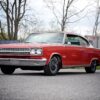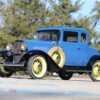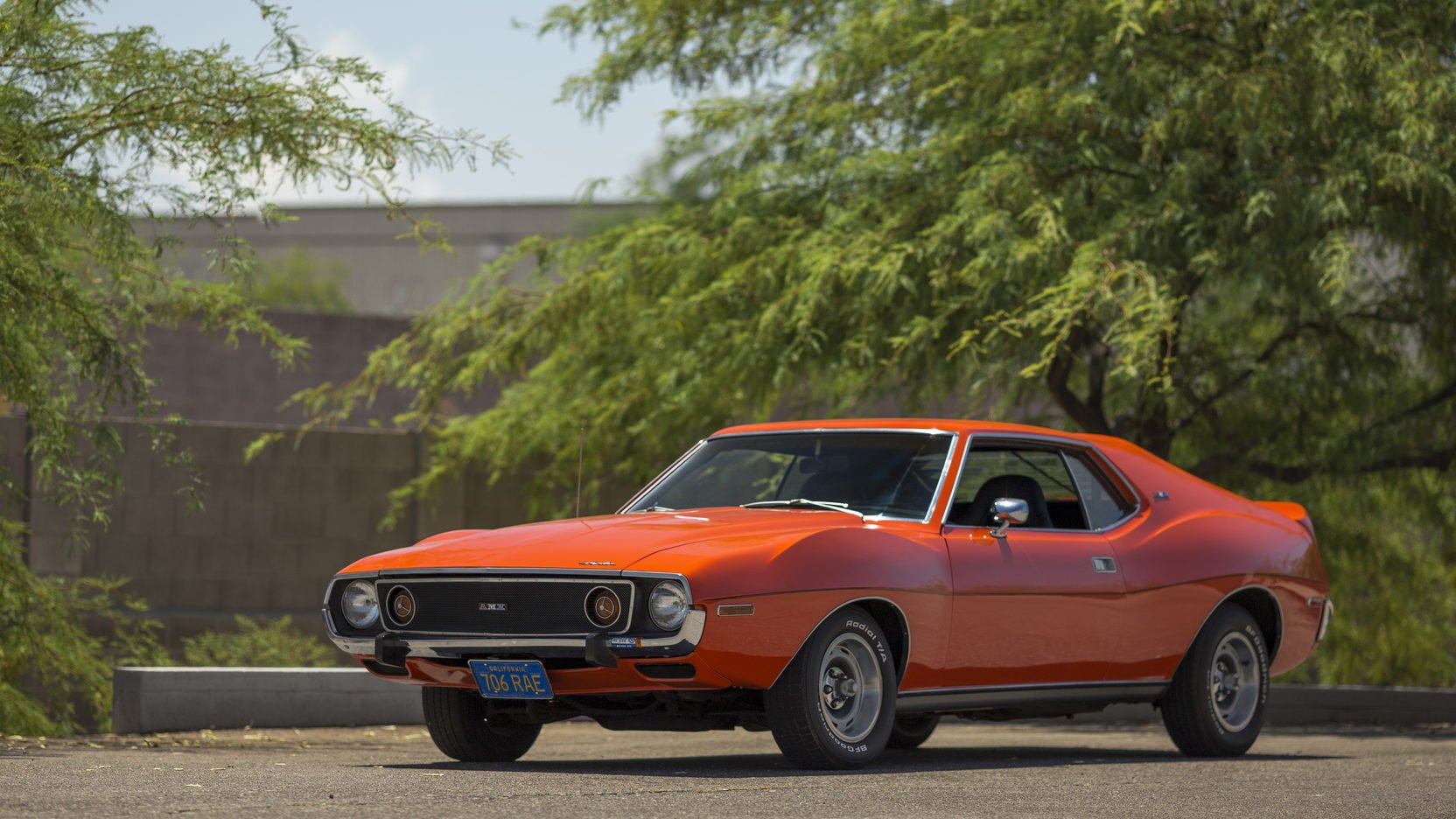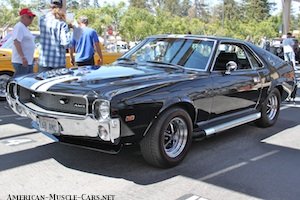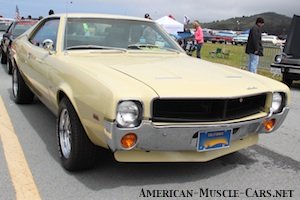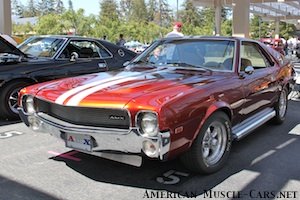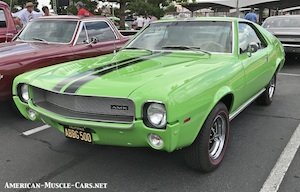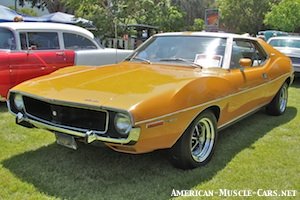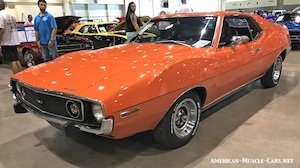AMC Javelin & AMX

AMC JAVELIN OVERVIEW
The Javelin has had quite a history in its short life. They were designed to be American Motors’ (AMC) entry into the Pony Car Wars, and were built on AMC’s “junior” (compact) platform (shared with the Rambler American) from 1968 through the 1974 model year. They came in 2 generations, the first from 1968 through 1970, and the second from 1971 through 1974. There was only one body style, a 2-door pillarless hardtop (no convertible), unless you count the shortened, 2-seat AMX. Javelins were built with a variety of engines, from economy to high-performance, and Javelins won the Trans Am Race Series in 1971, 1972 and 1976. The 2nd-gen AMX was the first pony car to serve as a highway patrol car.

FIRST-GENERATION AMC JAVELIN
AMC put several requirements on designer Richard Teaque. Sure, they wanted something sporty, but it had to have a generous back seat and trunk, it had to have all the latest safety features built in, and they only had the money for one body style. He came up with a semi-fastback that was distinctive, muscular and yet lean. The 59-degree windshield gave it a racy look. It had more interior and luggage space than any of the competition. There were no side vent windows, ventilation provided by vents in the doors which could be adjusted with a controller under the armrests. The grille was said to have a “twin venturi”-look, it certainly was aggressive.

AMC JAVELIN “GO PACKAGE”
The “Go Package” was available on larger V8 cars and included a 4-barrel carb, floor shifter (whether automatic or manual), power front disk brakes, heavy duty suspension, dual exhaust, special striping, and chrome Magnum 500 wheels with Red Line tires.

SECOND-GENERATION AMC JAVELIN
For the 1971 model year, the new Javelin was completely redesigned and restyled. It was now longer, wider and heavier and riding on a 1-inch longer wheelbase. The styling was more ‘over the top’ with Corvette-style fender bulges, and an integral roof spoiler.
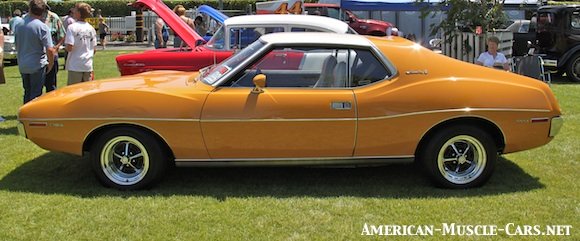
AMC JAVELIN ENGINES
At launch, the base engine was a 232ci straight 6. Next up was a 290ci V8 with 2-barrel. There were a pair of 343 V8s, one with 2-barrel and the other with high-compression and a 4-barrel (which needed premium fuel to generate its 284hp). By mid-1968 the 390 V8 was offered if you ordered the “Go Package” option group. The 390 made 315hp and 425 lb-ft of torque, and was good for a 7-second run to 60. In 1970, two new engines came on line, the 304 V8 and the 360 V8, which replaced the 290 and 343. With the new generation in 1971, the 401ci (6.6L) V8 became the top engine, with high compression, forged crank and rods and built to spin to 8000rpm. They came with a Borg-Warner T-10 4-speed manual trans with floor shift. While the rest of the industry drastically cut performance in the early 70s, AMC’s engines remained the same, although the rating system used for measuring horsepower had changed from “gross” to “net”, making all the output figures appear lower.
AMC Javelin & AMX YEAR-BY-YEAR
To save weight, AMC shortened the wheelbase, and with it the overall length, of the Javelin, eliminating the back seat, and created the 2-seat AMX.
AMC’s own ‘Pony Car’, their answer to the Mustang, gains power & gains a following, that remains dedicated to this day.
AMC’s 2-seater hot rod returns with more power, more options & all the attitude. And those cool side pipes.
1970 AMX
Last year of the 1st-generation & last year for the 2-seater. From now on, the AMX is just a package offered on the regular 4-seat Javelin.
The 2nd-generation was bigger & more luxurious, but slower. They styling got a little cartoony with the Corvette-style peaked fenders front & rear.
1973 AMX
No more 2-seat AMXs. Now the AMX is the top-line option package for the Javelin.



